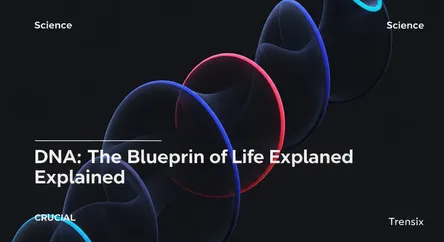Science
DNA: The Blueprint of Life Explained

Discover DNA, the molecule that holds the genetic instructions for every living thing. Learn about its structure, function, and modern impact.
What is it?
Deoxyribonucleic acid, or DNA, is the hereditary material in humans and almost all other organisms. It's a long molecule shaped like a twisted ladder, known as a double helix. The 'rungs' of this ladder are made of four chemical bases: adenine (A), guanine (G), cytosine (C), and thymine (T). The specific sequence of these bases forms the genetic code—a set of instructions for building and maintaining an organism. This remarkable molecule is found within the nucleus of every cell and contains the complete blueprint for life, dictating everything from eye color to susceptibility to certain diseases.
Why is it trending?
DNA is constantly in the spotlight due to rapid advancements in genetic technology. The rise of affordable direct-to-consumer ancestry and health testing kits has brought personal genomics into millions of homes. Furthermore, groundbreaking tools like CRISPR gene editing have opened up new possibilities for treating genetic disorders, sparking both excitement and ethical debate. Ongoing research into the human genome continues to unlock new secrets about health, evolution, and human history, keeping DNA at the forefront of scientific discovery and public interest.
How does it affect people?
DNA's influence is profound and personal. It determines our inherited traits and predispositions to various health conditions, empowering individuals with knowledge to make informed lifestyle and medical choices. In forensics, DNA fingerprinting has become a cornerstone of the justice system for identifying criminals and exonerating the innocent. Medically, understanding DNA is crucial for diagnosing genetic disorders, developing targeted cancer therapies, and pioneering personalized medicine tailored to an individual's unique genetic makeup. It is the fundamental script that writes the story of who we are.